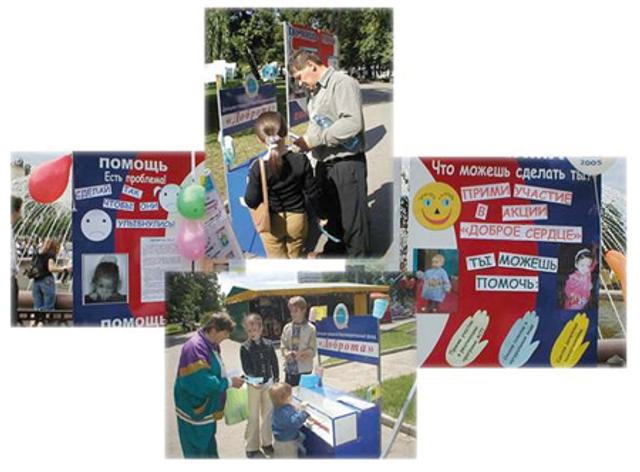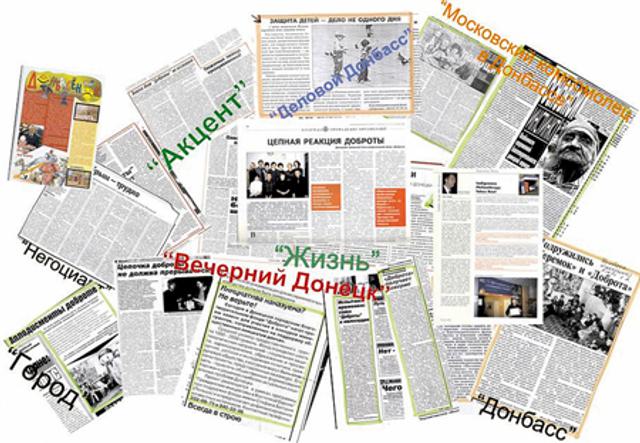Dobrota Foundation: ‘everyone can be a philanthropist’ campaign
- Exhibited by
- Civil Society Development Foundation (CSDF) Hungary.
- Added
- June 11, 2010
- Medium of Communication
- Broadcast and television, event, face to face, online, posters, press advertising, radio
- Target Audience
- Individuals, regular gift, single gift, corporations
- Type of Charity
- Public / society benefit
- Country of Origin
- Hungary
- Date of first appearance
- 2004
SOFII’s view
This massively ambitious and complex multi-media campaign generated results that speak for themselves. It shows what can be achieved with vision and commitment, even in an emerging market without an established culture of philanthropy. The campaign’s positive message and broad impact make it a worthy winner of the 2005 CEE Fundraising Achievement award.
Creator / originator
Dobrota Foundation with partner organizations: Eurasia Foundation , UCAN/ISC , Renaissance Foundation, World Bank , Stephan Batory Foundation and several businesses and NGOs.
Summary / objectives
Objectives were to enlarge the circle of donors by means of addressing:
- Less-wealthy inhabitants (small entrepreneurs, workers) and labour collectives.
- Those who are usually considered only as recipients (pupils and students, unemployed and homeless, etc).
- Medium-size and large corporations with the idea of corporate social responsibility (CSR) and managing social programmes.
Furthermore, the Foundation wanted to invite donations in the form of voluntary work and services provided free of charge from local experts (journalists, accountants, lawyers, consultants, etc). No financial objectives were set as Dobrota’s main interest was to diversify the sources of donations and increase their frequency.
- 10,507 letters were sent to individual prospect and house lists.
- More than 14,000 telephone calls were made.
- More than 1,500 meetings with the leaders of organisations and labour unions were held.
- 32 charitable events were conducted on the streets of the city, fairs and exhibitions.
- 153 money boxes were placed in shopping centres and pharmacies of the city;
- Boxes with receipts for donations were placed in 18 savings banks;
- More than 60,000 leaflets, booklets, pamphlets and posters were distributed in post boxes, public transport vehicles and during special events.
- Posters with social advertising were placed on four billboards, six street light-boxes, eight cars, walls of 20 busy public places (train stations, theatres, post offices, etc).
- 33 publications were initiated in the press, 39 sessions on the radio, 13 on TV, and 28 on the internet.
- There were 20 minutes of live broadcast on local TV each week.
- Weekly news updates on Foundation’s site.
- Distribution of information on the internet to 5,000 respondents every week.
- Weekly Gallup poll (telephone and mail questionnaires plus focus groups).
- Every week there were educational presentations, seminars, lectures and training for pupils, students, state employees, businessmen, leaders of public organisations.
To build donors’ loyalty, over 350 diplomas and 500 souvenirs (pens, caps, calendars with the Foundation’s symbols) were provided and more than 1,000 thank you letters were sent out.
In addition, Dobrota initiated the creation of a coalition of influential public organisations in Donetsk, took an active part in reorganising the Public Council at Regional State Administration, and led the Health Care Public Committee.
Background
Dobrota is the charitable foundation of Donetsk City in the Ukraine. Their mission is social service provision for regional, economic and community development in the city.
Undertaking philanthropic activities in a post-soviet community has limited chances of success if all attempts are directed to a single group of the population only. It is important to promote the theory and practice of philanthropy in different ways, but targeted towards the whole community. This can only be possible with trust that is based upon openness, transparency and accountability. In this large, complex fundraising campaign the Foundation focused not so much on increasing the total amount of donations, but on increasing the number of participants from different sectors, layers and strata of the population (ideally - all) in the fight against poverty.
Special characteristics
The volume, the complexity, the result and the media coverage of this campaign made the programme very impressive. Dobrota definitely managed to change the habits of the supporters and helped them become more devoted donors, so that they are no longer providers of once-only gifts but have become supporters who are involved in many ways of giving.
Influence / impact
The activities of the Foundation have been recognised by a wider public both in the native city, Ukraine and abroad. The results of Dobrota’s work were awarded with many diplomas and prizes. The strategy won an innovative practices award, organised by the sub-regional department of informational and educational network for Belarussia, Moldova and Ukraine.
Costs
€90,000.
Results
Primary results were income of €544,000, a return on investment (ROI) of six to one. Secondary additional results were that more than 30 per cent of donors made donations twice or more times a year. In addition more than 200 firms and experts gave charitable assistance in the form of work and services provided free of charge.
Merits
This was a large-scale campaign that was very successful. Nothing like it had been done before.
Other relevant information
Adapted from CSDF’s 2006 publication Mission Possible.
 View original image
View original image
 View original image
View original image
 View original image
View original image
Also in Categories
-
















